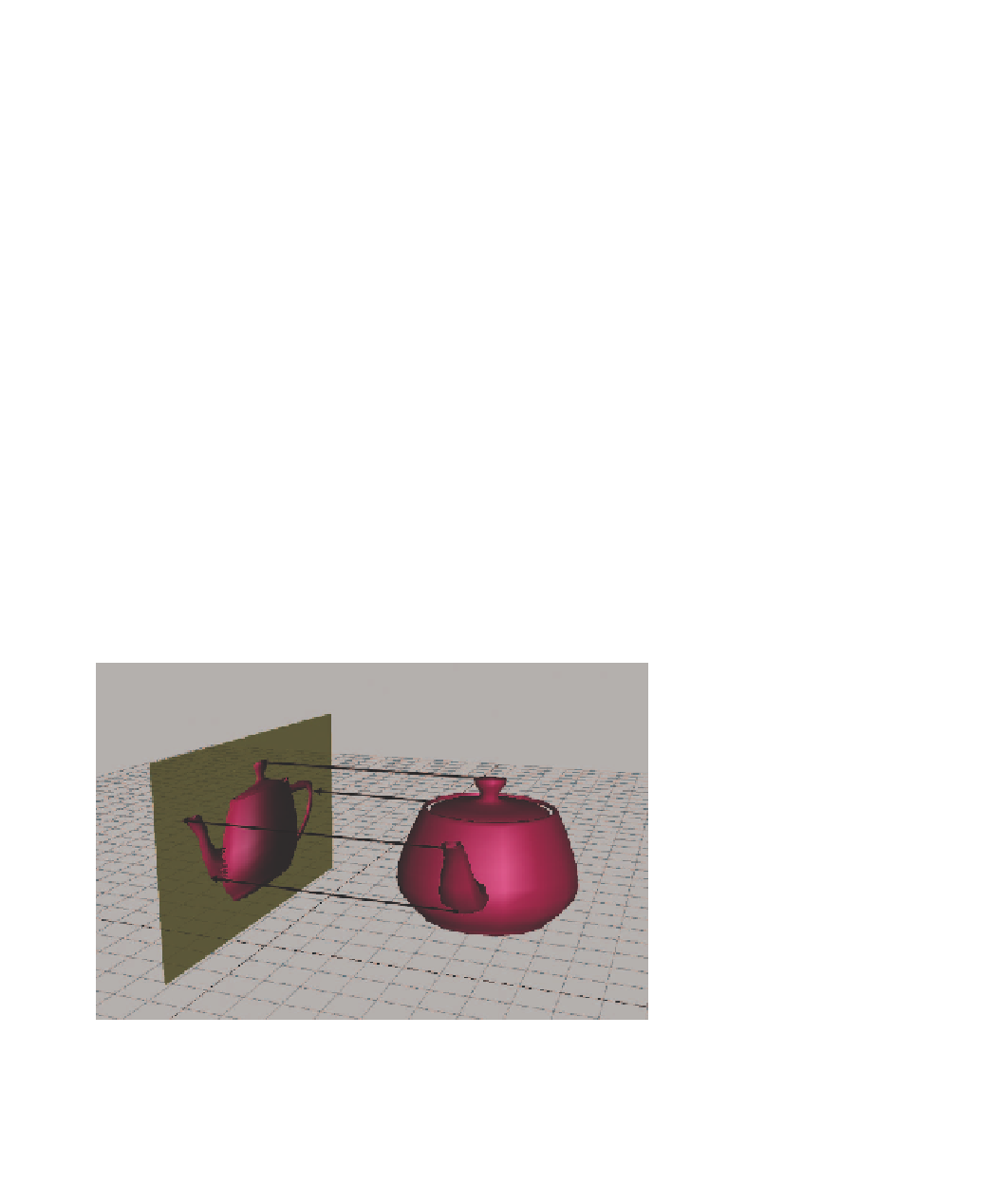Game Development Reference
In-Depth Information
Our use of “homogeneous” coordinates so far has really been nothing
more than a mathematical kludge to allow us to include translation in our
transformations. We use quotations around “homogeneous” because the w
value was always 1 (or 0, in the case of points at infinity). In the next
section, we will remove the quotations, and discuss meaningful ways to use
4D coordinates with other w values.
6.5
4 × 4
Matrices and Perspective Projection
Section 6.4.1
showed that when we interpret a 4D homogeneous vector in
3D, we divide by w. This division is a mathematical tool that we did not
really take advantage of in the previous section, since w was always 1 or 0.
However, if we play our cards right, we can use the division by w to en-
capsulate very succinctly the important geometric operation of perspective
projection.
We can learn a lot about perspective projection by comparing it to an-
other type of projection we have already discussed, orthographic projection.
Section 5.3 showed how to project 3D space onto a 2D plane, known as the
projection plane, by using orthographic projection. Orthographic projec-
tion is also known as parallel projection, because the projectors are parallel.
(A projector is a line from the original point to the resulting projected point
on the plane). The parallel projectors used in orthographic projection are
shown in Figure 6.3.
Figure 6.3
Orthographic projection uses parallel projectors.






Search WWH ::

Custom Search